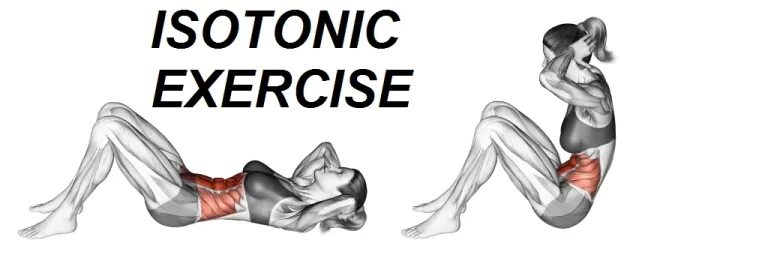11 Best Vocal Exercises for Strengthening Your Voice
What is a Vocal Exercise?
Vocal exercises are a series of exercises that are designed to warm up and strengthen the vocal cords, improve vocal range, and develop vocal technique. They can be used by singers, actors, and anyone else who wants to improve their speaking voice.
It is important to note that vocal exercises should be performed carefully and with proper technique. Pushing the voice can lead to vocal damage, so it is important to listen to your body and stop if you feel any pain or discomfort.
If you are new to vocal exercises, it is a good idea to consult with a vocal coach or singing teacher. They can help you develop a safe and effective vocal exercise routine that is tailored to your individual needs and goals.
Anatomy of Vocal Cords
Location of Vocal Cords
The vocal cords, also known as the vocal folds, are two bands of tissue in the larynx, or voice box deep in the anterior neck. They sit approximately at the vertical center of the larynx and protrude into its inner cavity. They are reliable for creating sound when we speak or sing.
Structure of Vocal Cords
Each vocal cord is made up of three main layers:
- Mucosa: The mucosa is the thin, outermost layer of the vocal cord. It is made up of epithelial cells and is responsible for protecting the vocal cord from infection.
- Lamina propria: The lamina propria is the middle layer of the vocal cord. It is composed of connective tissue, blood vessels, & nerves. The lamina propria contains the vocal ligament, which is a band of elastic tissue that helps the vocal cords to vibrate.
- Vocalis muscle: The vocalis muscle is the innermost layer of the vocal cord. It is accountable for maintaining the tension and function of the vocal cords.
The vocal cords are attached to the thyroid cartilage and the arytenoid cartilage. These cartilages move the vocal cords during phonation or sound production.
Nerve supply & blood supply for Vocal cords
- The nerve supply for the vocal cords is provided by two branches of the vagus nerve: the superior laryngeal nerve and the recurrent laryngeal nerve.
- The blood supply to the vocal cords is provided by two main arteries: the superior laryngeal artery and the inferior laryngeal artery.
- Both the superior and inferior laryngeal arteries have multiple branches that supply blood to the vocal cords. This ensures that the vocal cords have a good blood supply, even if one of the arteries is damaged.
- The blood supply to the vocal cords is important for their function. The blood provides oxygen and nutrients to the vocal cords, which allows them to vibrate and produce sound.
Function of Vocal Cords
- When we breathe, the vocal cords are relaxed and apart. When we speak or sing, the vocal cords come together and tighten. The air passing through the larynx causes the vocal cords to vibrate, which produces sound.
- The tension and position of the vocal cords determine the pitch of the sound produced. A tighter vocal cord will produce a higher pitch sound, while a looser vocal cord will produce a lower pitch sound.
- The volume of the sound produced is determined by the amount of air passing through the larynx. A stronger airflow will produce a louder sound, while a weaker airflow will produce a softer sound.
- The vocal cords are a delicate instrument, and they can be easily damaged if they are not used properly. Overuse, smoking, and exposure to irritants can all lead to vocal cord problems, such as hoarseness, loss of voice, and nodules.
- If you are experiencing any vocal cord problems, it is important to see a doctor or laryngologist for evaluation and treatment.
Causes of Vocal Cords Injury
Vocal cord paralysis:
- When you have vocal cord paralysis, you cannot regulate how your voice-controlling muscles move. It occurs when your voice box’s (larynx) nerve impulses are interrupted. The muscles in the voice cords become paralyzed as a result.
- Speaking and even breathing might be difficult for someone with vocal cord paralysis. That’s because your vocal cords, also known as vocal folds, perform a variety of functions. They guard your trachea (windpipe) as well as your airway by preventing saliva, food, and even liquids from getting inside and choking you.
- Viral infections, some malignancies, and nerve injury from surgery are a few potential reasons for vocal cord paralysis.
Other factors:
- Overuse
- Smoking
- Exposure to irritants
- Medical conditions, such as GERD, allergies, and neurological disorders
- Injury to the neck or chest
- Surgery
Signs and Symptoms of Vocal cord Injury may include
- Hoarseness
- Loss of voice
- Weakness in the voice
- Breathy voice
- Difficulty speaking or singing
- Pain in the throat
- Difficulty swallowing
- Choking or coughing while consuming food, drink, or saliva
- The necessity to take frequent breaths while speaking
- Inability to speak loudly
- Frequent throat clearing
It’s crucial to contact a physician or laryngologist for an assessment and therapy if any of these symptoms continue for more than two weeks.
Treatment for Vocal cord Injury
- The cause and extent of vocal cord injury will determine the appropriate course of treatment.
- Rest and Vocal exercise(voice therapy) could be sufficient in certain situations.
- In other cases, treatment with medicines or surgery can be needed.
Vocal Exercise
Vocal exercises are typically performed before singing or speaking to prepare the voice for use. They can also be used as part of a regular vocal training routine to improve vocal skills over time.
1. Warm-up Exercise

Here is a simple vocal exercise that you can do to warm up your voice and improve your vocal capacity
- Humming: Humming is a gentle exercise that helps to warm up the vocal cords. This will help to relax your vocal cords and open up your resonating chambers. Start by humming for 10-15 seconds.
- Scales: Scales are a sort of vocal practice that enhances tone and helps to strengthen vocal ability. Next, sing a scale from your lowest note to your highest note. Be sure to sing each note clearly and evenly.
- Once you have reached the top of the scale, sing back down to your lowest note.
- Repeat steps 2 and 3 several times.
2. The yawn-sigh technique

- The yawn-sigh technique is a vocal exercise that can be used to warm up the voice, relax the vocal cords, and improve vocal range. It is also a good way to reduce vocal tension and fatigue.
- Simply open your mouth and yawn (take in air) for this fast vocal practice. Then, exhale via your nose as if you are sighing. This will assist in relaxing your voice and enhance its range.
- You can repeat this exercise several times.
- Here is a more detailed step-by-step guide to performing the yawn-sigh technique:
- Sit up straight with your shoulders relaxed.
- Place your tongue on the bottom of your teeth and open your mouth wide.
- Yawn as deeply as possible.
- Once you have finished yawning, close your mouth and sigh slowly and completely.
- Repeat steps 2-4 several times.
- You can also try singing a yawn-sigh. To do this, simply sing a note with a relaxed mouth and then take a slow, deep sigh. You can sing yawn-sighs on different vowels and pitches.
- The yawn-sigh technique is a safe and effective vocal exercise that can be used by singers of all levels of experience. It is a good way to warm up the voice, relax the vocal cords, and improve vocal range.
3. Lip trills:
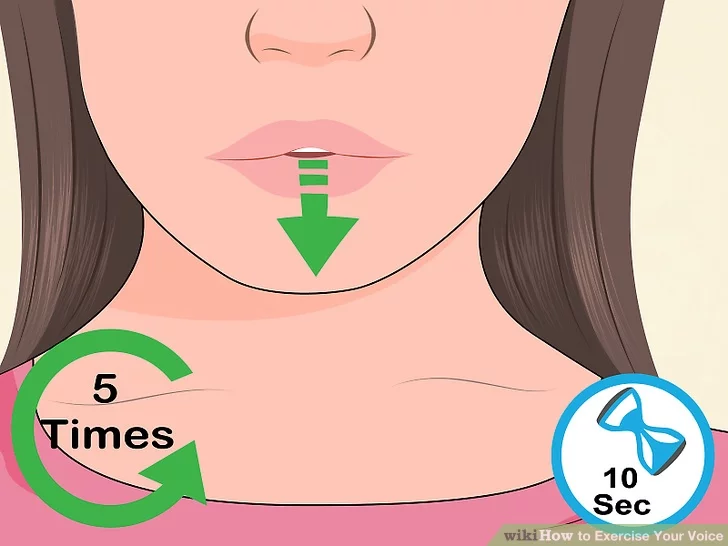
- Lip trills are a more vigorous exercise that helps to strengthen the vocal cords and improve flexibility. Hold your lips together and blow air through them, making a trilling sound.
- Tongue trills are similar to lip trills, but they use the tongue instead of the lips. Roll your tongue backward and forward, making a trilling sound.
4. Sirens

- Sirens are a type of vocal glide that helps to expand vocal range and improve pitch control.
- Start on a low note and sing a siren up to your highest note.
- Then, sing a siren back down to your lowest note. Imagine the sound a fire engine makes as it passes by.
- Starting at a low range, make the sound with “Ooooo” and “Eeeeee.” As you make the siren sound, go up and down your vocal range for five to eight seconds.
- Two or three additional repetitions of this exercise should be done, increasing the intensity each time.
- If you are incapable of hitting the elevated and low notes, then your voice is fatigued. Discontinue the exercise and let your voice relax for 5 minutes.
5. Arpeggios
- Arpeggios are a great way to warm up your vocal cords and improve your vocal range. They are also a good way to develop your pitch control and agility.
- To sing arpeggios, sing a series of notes that are spread out. For example, you could sing a C major arpeggio by singing the notes C-E-G. You could also sing a C minor arpeggio by singing the notes C-Eb-G.
- You can sing arpeggios in different ways to make them more challenging. For example, you could try singing them in different octaves, or you could try singing them with different rhythms.
6. Vocal Straw Exercise
- The vocal straw exercise, commonly called straw phonation, is done by humming through a straw.
- Start at the bottom of your range then gradually and evenly work your way to the top. After that, hum your preferred tune through the straw.
- Additionally, you may insert the straw into a glass that is just halfway full of liquid and gently blow bubbles into the container.
7. Jaw Loosening Exercise
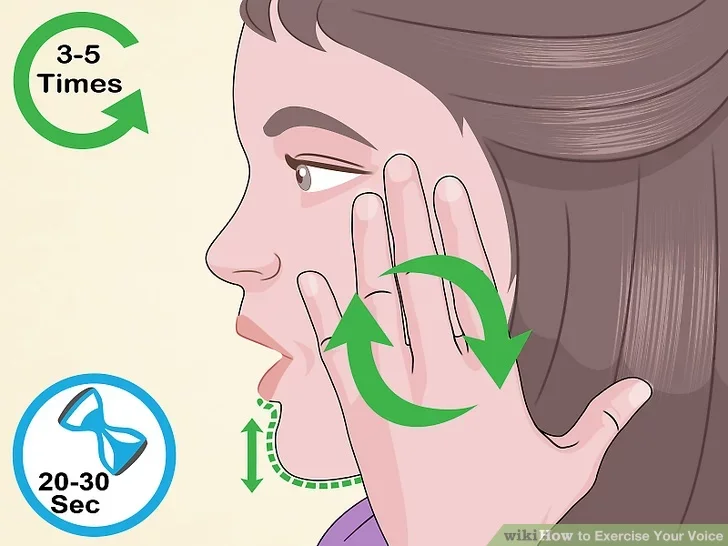
- These exercises can help to reduce tension in the jaw and facial muscles, which can improve vocal range and tone. They can also help to prevent vocal strain and injury.
- Jaw drop: Open your mouth as widely as you can while allowing your jaw to relax. After a little period of holding, carefully shut your mouth. Repeat 10 times.
- Side-to-side jaw movement: While slowly moving your jaw in either direction, keep your lips sealed. 10 times on each side, repeat.
- Circular jaw movement: Gradually move your jaw in a circular motion, holding your lips locked. Repeat 10 times in each direction.
- Chewing gum: Chewing gum can assist in loosening up the jaw muscles and enhance the range of motion. Pick a sugar-free gum to avoid cavities.
- Massaging the jaw: Massage the muscles close to your jaw with your fingertips. You can also use a warm compress to support loosening up the muscles.
In addition to these basic exercises, there are also many more specialized exercises that can be used to target specific vocal challenges. For example, some exercises can help improve breath support, resonance, and vocal power.
8. The two-octave pitch glide warm-up
- The two-octave pitch glide warm-up exercise is a great way to loosen up your vocal cords and enhance your vocal range. It can also help to enhance your pitch accuracy and power.
- To do the exercise, simply start on a relaxing note in your chest voice and slowly slide up two octaves.
- You can use a vowel sound such as “ah” or “ee” for the exercise. As you slide up, keep your jaw relaxed and your tongue forward and flat.
- Avoid pushing your voice or straining your vocal cords.
- Once you reach the top of your range, gradually slide back down to the starting note.
- Repeat the exercise for a few moments, slowly improving your range each time.
9. Diaphragmatic breathing
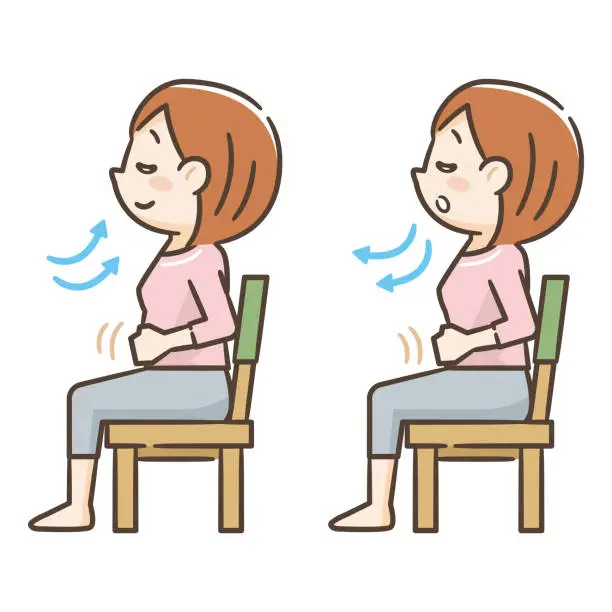
This exercise helps to strengthen your diaphragm, which is the main muscle used for breathing. When your diaphragm is strong, it can help to support your vocal cords and improve your vocal projection.
simple breathing exercises that can help to improve your vocal cord function.
- With your shoulders relaxed and your back erect, sit or stand in a comfortable position.
- Set one hand on your abdomen and the other on your chest.
- Inhale gradually and deeply via your nose, allowing your stomach to extend.
- Hold your breath for a few seconds.
- Allow your stomach to contract as you gently exhale through your mouth.
- Repeat this exercise 10-15 times.
10. Exhaling on a hiss
Exhaling on a hiss is a great way to warm up your vocal cords and improve your breath control. It can also help to strengthen your vocal cords and improve your vocal range.
It is a good exercise to do before singing or speaking for extended periods of time.
It can help to remove mucus from your throat, improve your vocal projection, increase your lung capacity, and reduce stress and anxiety.
To exhale on a hiss
- Stand up straight and relax your body.
- Inhale slowly and deeply through your nose.
- Exhale gradually through your mouth, creating a hissing sound. Make a hissing sound that resembles the initial letter of the word “sizzle” while exhaling.
- In your throat and chest, feel the vibrations.
- Continue hissing for 10-20 seconds.
some tips for exhaling on a hiss
- Keep your jaw relaxed and your tongue forward and flat.
- Avoid pushing your voice or straining your vocal cords.
- Focus on maintaining a steady hiss.
- If you sense any pain or discomfort, stop the exercise instantly.
11. Shoulder raising exercise for vocal cord
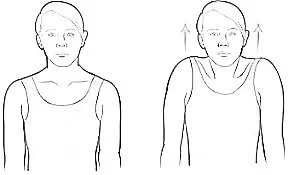
This exercise helps to release tension in the neck and shoulder muscles, which can improve vocal cord function.
To do this exercise:
- Stand with your feet shoulder-width separated and your arms swinging by your sides.
- Shrug your shoulders slowly in the direction of your ears.
- Hold for a few seconds.
- Slowly relax your shoulders back down.
- Repeat 10-15 times.
Food for Healthy Vocal Cord
A healthy diet is essential for vocal health. Eating the right foods and drinks can help to keep your vocal cords hydrated and lubricated, and can also provide your body with the nutrients it needs to support vocal function.
Best foods for Vocal cord health
- Water: Water is the most important nutrient for vocal health. It helps to keep your vocal cords hydrated and lubricated, which makes them more flexible and less susceptible to injury. Target to drink at least 8 glasses of water per day.
- Honey (mixed with lemon and warm water)
- Lean protein: Lean protein sources, such as chicken, fish, tofu, and beans, can help to support muscle health and provide a sustained source of energy. They are also full of amino acids, which are necessary for keeping good vocal health.
- Fruits and vegetables: Fruits and vegetables are packed with vitamins, minerals, and antioxidants essential for overall health, including vocal health. Some particularly beneficial fruits and vegetables for vocal health include
- Apples
- Bananas
- Berries
- Citrus fruits
- Dark leafy greens
- Melons
- Sweet potatoes
- Whole grains: Whole grains are a good source of complex carbohydrates, which provide your body with sustained energy throughout the day. This is important for vocal health, as prolonged vocal use can be draining. Some good origins of whole grains include:
- Brown rice
- Oatmeal
- Whole-wheat bread and pasta
Foods to avoid for Vocal cord health
- Hot sauce/spicy foods: Spicy foods can irritate the vocal cords and cause swelling. If you have a sensitive voice, it is best to avoid spicy foods altogether.
- Greasy snack foods/Oily foods: Acidic foods, such as citrus fruits and tomatoes, can also irritate the vocal cords. If you have a sensitive voice, it is best to avoid acidic foods in the hours leading up to a vocal performance.
- Dairy products: Dairy products can thicken mucus, which can make it difficult to sing or speak clearly. It is best to avoid dairy products in the hours leading up to a vocal performance. avoid dairy products like
- Chocolate
- Cheese
- Milk
- Yogurt
- Ice cream
- Nuts
- Caffeine and alcohol: Caffeine and alcohol can dehydrate your vocal cords and make them more susceptible to injury. It is best to avoid caffeine and alcohol altogether or to consume them in moderation.
Prevention for Vocal Cord Injury
- Get enough sleep, when you are well-rested, your vocal cords are more likely to be healthy and to function optimally.
- Avoid overuse of your voice.
- Avoid smoking and exposure to irritants.
- Treat medical conditions that can affect the voice, such as GERD and allergies.
- Warm up your voice earlier to singing or speaking.
- Use proper vocal techniques when speaking and singing.
- Take breaks if you are going to be singing or speaking for a long period of time.
- If you have any questions or concerns about vocal cord damage, please consult with a doctor or other healthcare professional.
FAQs
What is Vocal Exercise?
Vocal exercises are a set of exercises intended to enhance vocal range, strengthen and warm up the vocal cords, and improve vocal technique. Actors, singers, and anybody else who wishes to enhance their speaking voice can use them.
Which vocal exercise is most effective?
The Yawn-sigh method. Just shut your mouth and yawn (take in air) to complete this little voice exercise.
humming exercises, Exercise with a Vocal Straw, Lip buzz Warm-up vocal, Exercise your tongue trills, Jaw Loosening Activities, Pitch glide in two octaves Get warmed up, and Exercise using Voice Sirens.
What drink can I take to help my voice?
Prior to singing, sip water at room temperature, Sip Herbal Tea to Relax Your Vocal Cords, For soothing the throat, water mixed with honey and fruit juice.
What is a diet for healthy vocal cords?
Strong muscles with typically excellent tone and endurance are necessary for a healthy voice. So make sure your diet includes a good mix of entire grains, beans, fruits, veggies, and healthy fats and oils in moderation.
Why does one have a weak voice?
Vocal cord swelling brought on by excessive voice usage or viral infection is known as laryngitis. Allergy due to Vocal chord swelling brought on by sneezing, post-nasal drip, and coughing. Laryngopharyngeal reflux is a kind of stomach reflux that irritates and swells the sensitive throat and vocal cord tissues
References
- 10 Best Vocal Warm-Ups that Will Improve Your Singing. (2023, June 22). https://www.iconcollective.edu/best-vocal-warm-ups
- Muñoz, P. (2023). 4 ways to exercise your voice – WikiHow. wikiHow. https://www.wikihow.com/Exercise-Your-Voice
- MSc, N. M. (2022, August 2). Vocal cords. Kenhub. https://www.kenhub.com/en/library/anatomy/vocal-cords
- Vashishta, R., MD. (n.d.). Vocal Cord and Voice Box Anatomy: Overview, Gross Anatomy, Microscopic Anatomy. https://emedicine.medscape.com/article/1948995-overview?form=fpf




